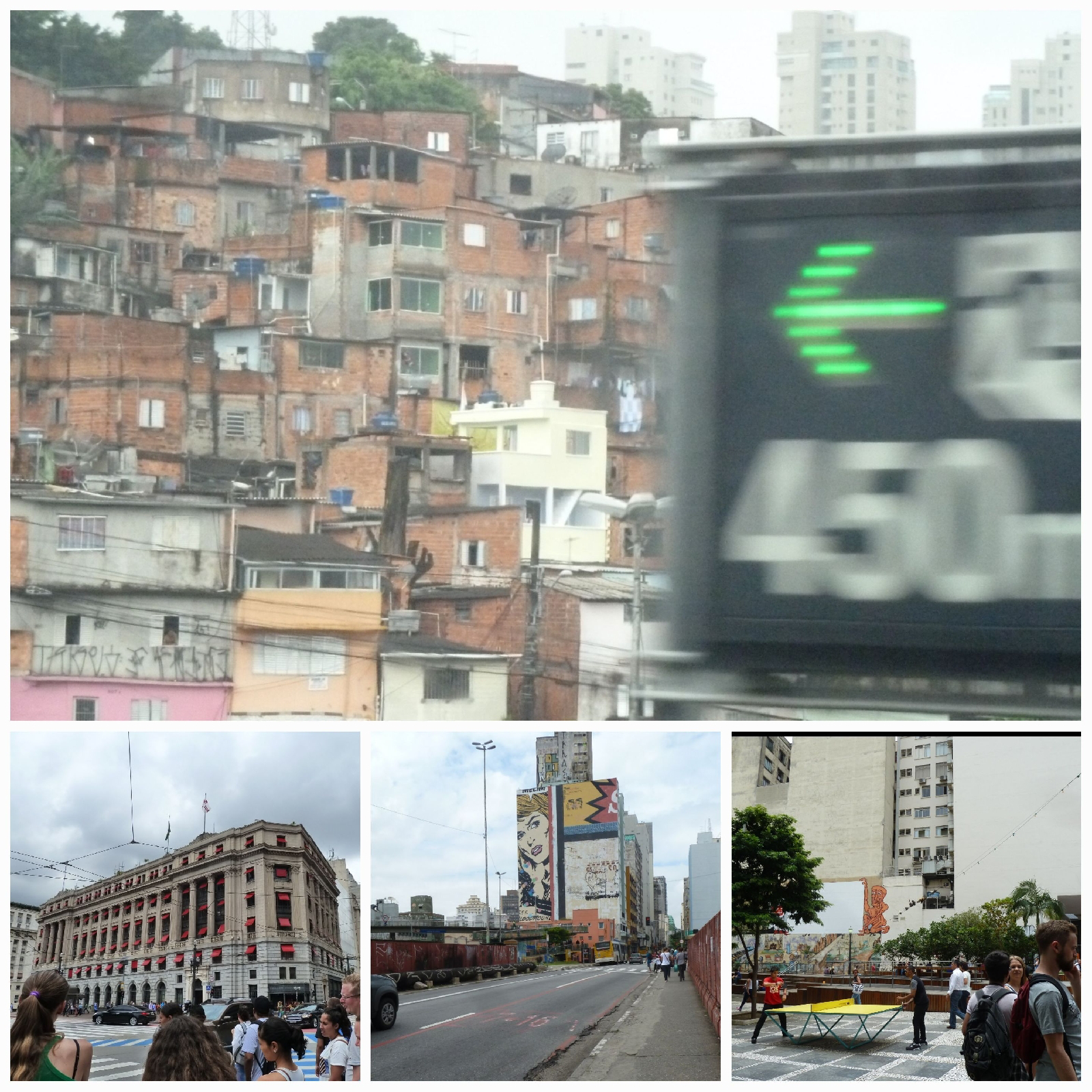Sao Paulo, Brazil, with caution.
We have been warned by our young grandson (no thanks to Fast and Furious 5,filmed in Rio). It is a dangerous city. Time to find out. Carrying very little and wearing nothing conspicuously expensive, we are ready for the streets. We are right in the middle of the city close to where riot police will be stationed in a few days’ time as described in one of my earlier posts.
Japanese, Korean, Italian . . .
We decide to join a city tour to acquaint our selves with the layout of the city. Our guide is a fourth generation Japanese Paulista. We are amazed at how various immigrants have assimilated into the Brazilian diaspora. Sao Paulo has the largest Japanese population outside of Japan. (My blog Alms and the Man tells of what happened to Drink outside the Japanese museum)
A beautiful cosmopolitan city
There are great views and then loud hints of discontent
Strikingly for a city, we can actually see the architectural aspects of the buildings – no tiresome obstructions and distractions like billboards ( electronic or otherwise), video screens or even ads on buses. The roads are wide and tree-lined. Parks abound. Public transport is excellent. The favelas and shanty towns show up sandwiched between posh areas. The rich and the poor share the city.
Unsightly scribblings on unreachable surfaces
But alas, we find tall buildings covered in what seems like higgledy-piggledy hieroglyphics. A page from history might explain it. During the dictatorship from the 30s to the 50s protestors wrote messages in tar on the streets. Now its a different canvas
A means of expression
Pixacao. That's is the word for the messages on the wall also seen in the other South American countries. It has its beginnings in Brazil. It is a method of tagging characterised by distinctive large letters painted in a cryptic style. It is all pervading in public spaces. Apparently they make statements about social injustice, poverty and corruption. The groups writing them are called crews mostly made up of the marginalised poor waging war against the elite – expressions of a grudge, a protest, a grievance, a condemnation.
To be read from afar the script has to be large and clear. Straight lines and sharp endings serve the purpose. They vaguely resemble Latin.
Evolution into adrenaline-fuelled vandalism
How do you distinguish between ego and political message when Pixadores are competing against each other? Each crew wants to leave leave an identity on every wall possible: the higher the better, the more remarkable a building the better.
Sadly, even murals are scribbled over.
Imagine the great lengths they go to, and the risks they take in scaling extremely tall walls armed with rollers, spray cans, etc. Imagine the speed and strength, the adrenaline required to accomplish the task in as short a time as possible and not be caught. Imagine them crawling up pipes, swinging from balcony to balcony vertically or horizontally like monkeys. Accidents and fatalities are not uncommon.
Trivia: Sao Paulo became the world's first non-communist city to ban outdoor advertising.












No comments:
Post a Comment
Comments are welcome